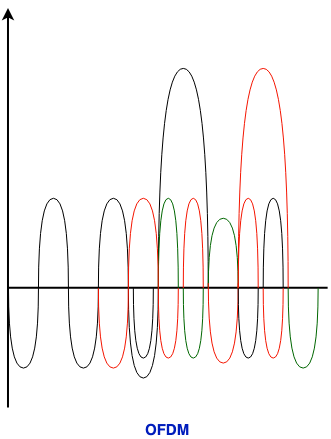Difference between FDM and OFDM
Last Updated :
21 Feb, 2023
Frequency Division Multiplexing (FDM): It is the multiplexing technique which is used in analog system. In FDM, Guard band is required and the spectral efficiency of FDM is low. In FDM, Bandwidth (B) is committed to the different sources.

Orthogonal Frequency Division Multiplexing (OFDM): It is also the multiplexing technique which is used in analog system. In OFDM, Guard band is not required and the spectral efficiency of OFDM is high which oppose to the FDM. In OFDM, Single data source attaches all the sub-channels.

Let’s see the difference between FDM and OFDM:
| S.NO |
FDM |
OFDM |
| 1. |
FDM stands for Frequency Division Multiplexing. |
OFDM stands for Orthogonal Frequency Division Multiplexing. |
| 2. |
In FDM, Guard band is required. |
While in OFDM, Guard band is not compulsory. |
| 3. |
The spectral efficiency of FDM is low. |
While the spectral efficiency of OFDM is high. |
| 4. |
The effect of interference in FDM is face down. |
The effect of interference in OFDM is trivial. |
| 5. |
There is no relationship exist between the carriers in FDM. |
There is exist the relationship between the carriers in OFDM. |
| 6. |
In FDM, Bandwidth(B) is committed to the different sources. |
In OFDM, Single data source attaches all the sub-channels. |
| 7. |
FDM supports low data rate. |
While OFDM gives higher data rate. |
| 8. |
Carriers in FDM are loosely arranged and much aside from each other |
Carriers in OFDM are densely arranged and close to each other. |
| 9. |
Applications of FDM are in radio and satellite communication. |
Applications of OFDM are in LTE technologies and broadband internet. |
Like Article
Suggest improvement
Share your thoughts in the comments
Please Login to comment...